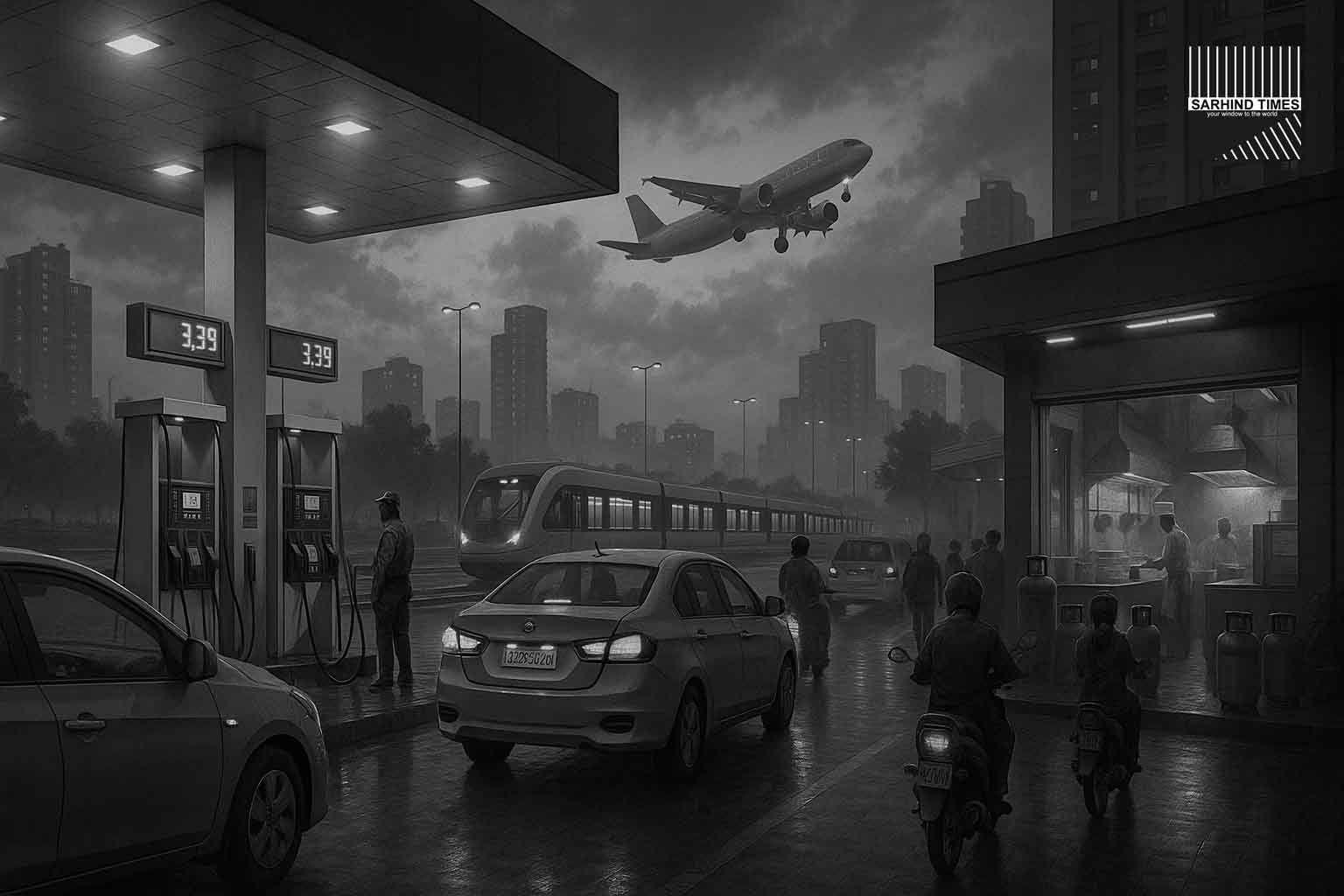New Delhi, October 1 –
India’s fuel consumers woke up to a familiar sight this morning: stable petrol and diesel prices at pumps across major metros. Despite recent hikes in Aviation Turbine Fuel (ATF) and commercial LPG, early morning trackers reported little to no change in retail prices for households and motorists.
In Mumbai, petrol continued to hover around ₹103.50 per litre, while diesel stayed near ₹90.03 per litre. Similar steadiness was observed in Delhi, Bengaluru, and Kolkata, reflecting the policy of oil marketing companies (OMCs) to hold retail prices steady while managing fluctuations internally.
Why Prices Are Stable Despite ATF & LPG Hikes
While airlines and commercial kitchens brace for higher input costs after ATF rose by ₹3,052.5/kL and LPG by ₹15.50 per 19kg cylinder, OMCs have chosen to shield household consumers from volatility in petrol and diesel rates.
Industry experts say this is part of a deliberate “under-the-hood” adjustment strategy:
- Wholesale slabs and margins are tweaked periodically.
- Pump prices are kept steady to avoid inflationary shocks.
- Losses (if any) are recovered gradually when crude stabilizes.
Metros Price Snapshot (October 1, Morning Check)
- Delhi: Petrol ~₹96.72/litre, Diesel ~₹89.62/litre.
- Mumbai: Petrol ~₹103.50/litre, Diesel ~₹90.03/litre.
- Kolkata: Petrol ~₹106.03/litre, Diesel ~₹92.76/litre.
- Bengaluru: Petrol ~₹101.94/litre, Diesel ~₹87.89/litre.
Rates have remained largely unchanged since May, underlining the stability-first approach of OMCs.
The Crude Oil Factor
Analysts warn that stability could be tested if:
- Global crude prices spike due to Middle East disruptions.
- The Indian rupee weakens against the dollar.
- Domestic tax adjustments alter pump pricing formulas.
For now, Brent crude hovers around the $83–85/barrel range, providing OMCs some cushion.
Impact on Households and Gig Economy
For consumers, steady prices mean:
- Relief for middle-class families, already stretched by food inflation.
- Predictability for gig workers like cab and delivery drivers, whose earnings are sensitive to daily fuel costs.
Ride-hailing operators report that ETAs and fare surcharges have normalized after a volatile August, offering stability for both drivers and riders.
Commercial Users Feel the Heat
While households breathe easier, commercial sectors are less lucky:
- Airlines: ATF accounts for 40% of operating costs; fares may rise.
- Hospitality & catering: Higher LPG prices will nudge overheads, especially ahead of festive demand.
- Logistics & freight: Remain cushioned for now, but long-term crude volatility may alter diesel parity.
OMC Strategy and Government Oversight
OMCs—IOC, BPCL, and HPCL—have kept petrol/diesel retail prices frozen since mid-2022, barring minor tweaks. This stability reflects both government sensitivity to inflation and OMCs’ ability to absorb temporary losses.
Economists point out that such interventions are politically sensitive in a pre-election year, as fuel prices directly shape consumer sentiment.
Global Benchmarks and India’s Import Bill
India imports 85% of its crude needs, making it highly vulnerable to global price swings. A $1/barrel rise in crude can increase India’s annual import bill by nearly ₹10,000 crore.
Stable pump prices, therefore, are as much about macro-economic management as about consumer relief.
Voices from the Ground
- Cab Driver in Delhi: “At least we know what we’re paying daily. It’s been steady for months. Any change shakes our income.”
- Restaurant Owner in Bengaluru: “Diesel is steady, but LPG hikes hit us hard. Costs are rising ahead of the festival season.”
- Energy Analyst: “India is buying time. Retail stability cannot last forever if crude trends upward.”
Looking Ahead
Experts predict pump prices will remain stable through the festive quarter, barring extreme crude shocks. But Q1 2026 could see pass-through adjustments, particularly if:
- The Middle East remains unstable.
- The U.S. tightens sanctions on oil producers.
- Domestic inflation management demands flexibility.
Conclusion: Stability for Now, But Uncertainty Looms
For now, consumers can enjoy a rare breather: petrol and diesel prices remain unchanged, despite turbulence in ATF and LPG benchmarks.
Yet, the ledger of 2025’s fuel story is unfinished. The resilience of India’s fuel price management will depend on global crude dynamics, domestic inflation targets, and political economy considerations.
In short: today is calm, but tomorrow may not be.
#FuelPrices #Petrol #Diesel #Mumbai #OMCs #Energy #Inflation #Consumers #CrudeOil #IndiaEconomy






















+ There are no comments
Add yours